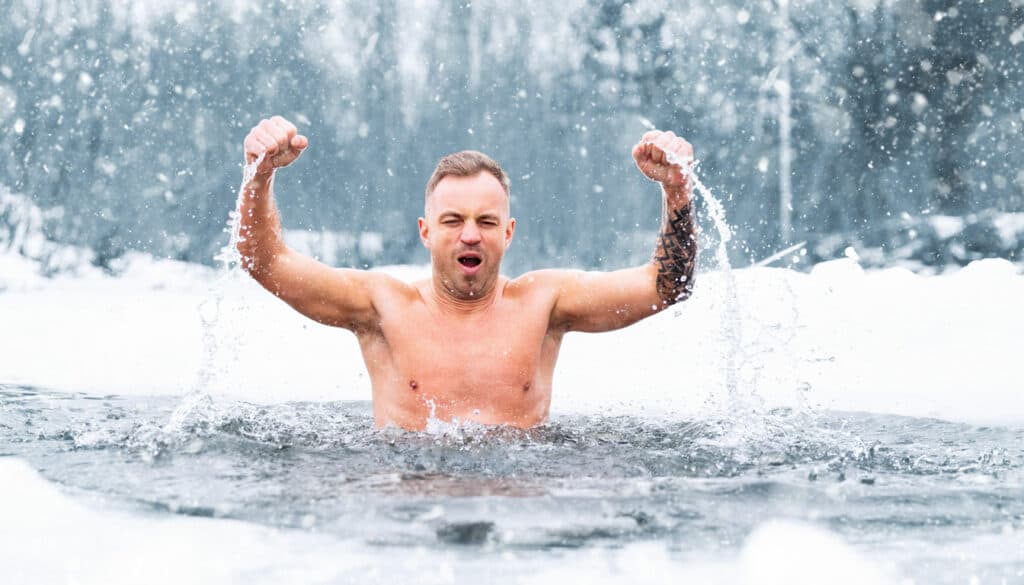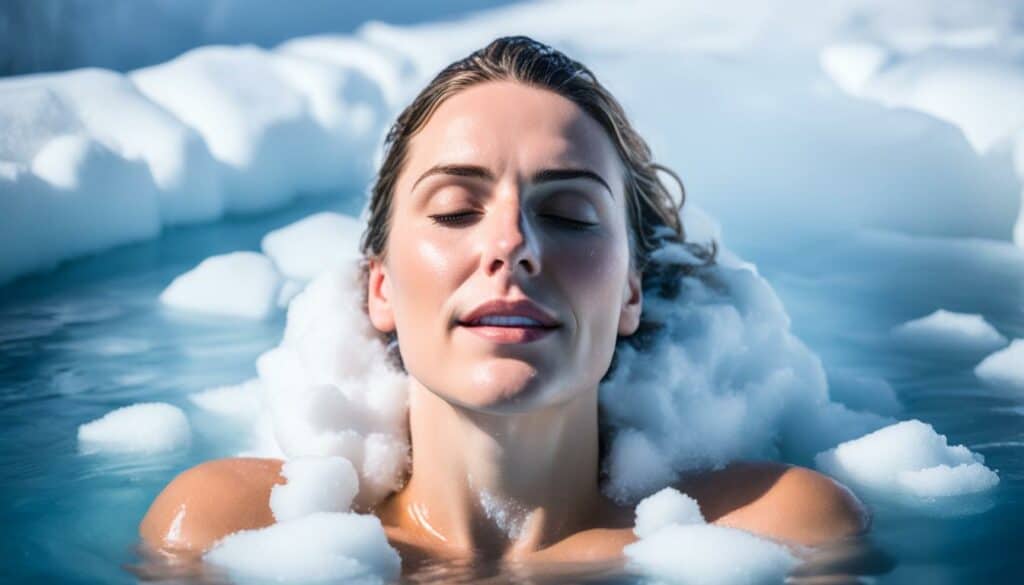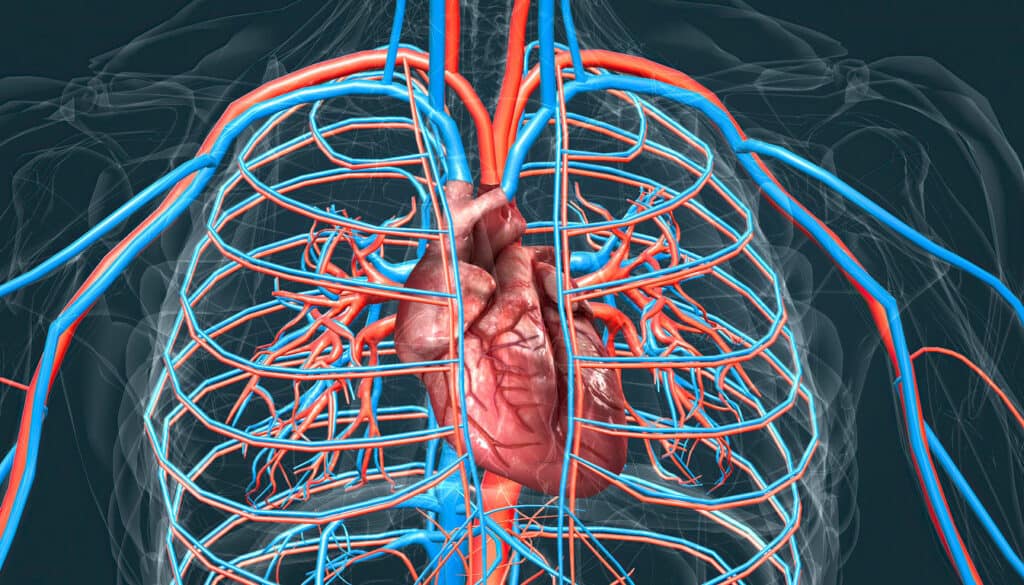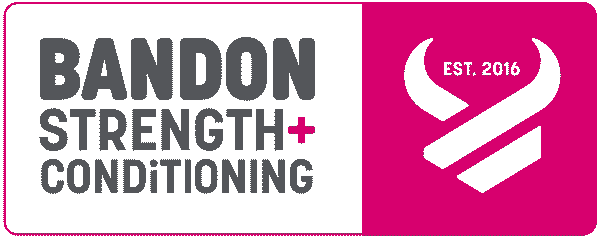Did you know that sauna and cold plunge therapy, also known as contrast therapy, has been used for centuries in Nordic cultures and is gaining popularity worldwide? These ancient practices of immersing oneself in extreme temperatures offer a range of surprising health benefits that can enhance your overall well-being. In this article, we will uncover the transformative effects of sauna and cold plunge therapy, explore their historical context and cultural significance, and delve into the various health benefits they offer. From relaxation and stress reduction to cardiovascular improvements and muscle repair, the fusion of hot and cold therapy holds immense potential for rejuvenating your body and mind. Get ready to discover the secrets of sauna and cold plunge therapy and learn how to incorporate them into your wellness routine.

Key Takeaways:
- Contrast therapy, combining sauna and cold plunge therapy, has surprising health benefits.
- These therapies have been used for centuries in Nordic cultures and are gaining popularity worldwide.
- They offer relaxation, stress reduction, cardiovascular improvements, and muscle repair.
- Incorporating sauna and cold plunge therapy into your routine can enhance your overall well-being.
- Discover the secrets of sauna and cold plunge therapy and transform your physical and mental health.
Embracing the Nordic Cycle: Saunas and Cold Plunges
Saunas and cold plunges have a rich historical context, particularly in Nordic cultures. They have been used for centuries as a means of relaxation, cleansing, and rejuvenation. The Nordic cycle, which involves alternating between saunas and cold water immersion, has become an integral part of their lifestyle. This practice has also been adopted by various cultures around the world, each adding their own unique twist to it. From the traditional Finnish saunas to the Russian banya and the Japanese onsen, saunas and cold plunges have found their place in different societies.
In this section, we will delve into the history of saunas and cold water therapies, explore their cultural significance, and understand how they have been embraced across the globe.
The Historical Context of Saunas and Cold Water Therapies
Saunas and cold water therapies have a long-standing history in Nordic cultures. The practice of using heat and cold for therapeutic purposes dates back centuries, with evidence of saunas present in archaeological findings. Saunas were initially used for cleansing and purification, as well as for promoting overall well-being.
Cold water therapies, on the other hand, were often associated with natural bodies of water, such as lakes and rivers. Taking dips in icy waters was believed to invigorate the body, stimulate circulation, and enhance the immune system.
Over time, these individual practices merged to form the Nordic cycle, a holistic approach to wellness that involves alternating between saunas and cold plunges. This cycle has been passed down through generations, preserving the traditions and benefits of heat and cold therapy.
Cultural Significance and Adoption Across the Globe
The cultural significance of saunas and cold plunges extends beyond Nordic cultures. As the benefits of contrast therapy became more widely known, various cultures around the world adopted their own versions of saunas and cold water therapies.
In Finland, saunas are an integral part of everyday life, with approximately one sauna for every three inhabitants. It is a place for relaxation, socializing, and unwinding after a long day. In Russia, the banya is a traditional steam bath that combines the use of heat, steam, and cold plunge pools. It serves as a meeting place for friends and family while offering the same rejuvenating effects as saunas.
In Japan, the onsen is a natural hot spring that is enjoyed for its therapeutic properties. Onsens have become popular tourist attractions, providing visitors with a unique cultural experience and a chance to relax in mineral-rich hot waters.
Beyond these specific examples, saunas and cold plunges have been adopted by individuals and communities worldwide. The global adoption of contrast therapy speaks to its universal appeal and the recognition of its health benefits.
Understanding the Health Benefits of Sauna and Cold Plunge
Sauna and cold plunge therapy offer a wide range of health benefits, making them an attractive choice for individuals seeking to enhance their overall well-being. By exposing the body to contrasting temperatures, these therapies stimulate various physiological responses that can positively impact physical and mental health. In this section, we will explore the specific health benefits of saunas and cold plunges, including increased energy levels, improved circulation, enhanced immune function, faster muscle repair, and improved skin health. Understanding these benefits will help you make an informed decision about incorporating sauna and cold plunge therapy into your wellness routine.

One of the key health benefits of sauna and cold plunge therapy is increased energy levels. The alternating exposure to heat and cold stimulates the body, leading to a surge of energy and mental alertness. This energizing effect can help combat fatigue and improve productivity throughout the day.
In addition to boosting energy, sauna and cold plunge therapy also promote improved circulation. The heat from the sauna dilates blood vessels, increasing blood flow and delivering oxygen and nutrients to the muscles and organs. On the other hand, the cold water immersion in the plunge constricts blood vessels, forcing the blood to flow deeper into the body. This contrast therapy enhances overall circulation, which is vital for maintaining optimal health.
Furthermore, sauna and cold plunge therapy have been shown to enhance immune function. The heat exposure in the sauna stimulates the production of white blood cells and antibodies, strengthening the immune system’s ability to fight off infections. Meanwhile, the cold water immersion in the plunge activates the body’s natural defense mechanisms, promoting lymphatic circulation and enhancing the immune response.
Another significant health benefit of sauna and cold plunge therapy is faster muscle repair. The heat from the sauna helps relax muscles, relieve tension, and reduce muscle soreness. This promotes faster recovery and repairs damaged muscle tissue more efficiently. The cold water immersion in the plunge, on the other hand, reduces muscle inflammation and helps decrease metabolic activity, aiding in muscle repair and alleviating post-exercise soreness.
Lastly, sauna and cold plunge therapy contribute to improved skin health. The heat from the sauna promotes sweating, which cleanses the skin and helps remove toxins. The cold water immersion in the plunge tightens the pores, resulting in a smoother and more toned complexion. The combination of heat and cold exposure in contrast therapy can significantly improve overall skin health and contribute to a glowing and youthful appearance.
By understanding the specific health benefits that sauna and cold plunge therapy offer, you can make an informed decision about incorporating these practices into your wellness routine. Whether you’re seeking increased energy, improved circulation, enhanced immune function, faster muscle repair, or improved skin health, sauna and cold plunge therapy can be valuable additions to your overall well-being.
The Art of Relaxation: Saunas for Mental and Physical Calm
Saunas have long been known for their relaxing properties. The heat and steam in saunas induce a deep sense of relaxation, helping to calm the mind and relieve physical tension.
How Saunas Induce Deep Relaxation
Saunas have a unique ability to promote deep relaxation. When the body is exposed to the heat in a sauna, it triggers the release of endorphins, which are natural chemicals that promote feelings of well-being and reduce stress. This release of endorphins helps to calm the mind and create a state of mental calmness. Additionally, the heat from the sauna also activates the parasympathetic nervous system, which is responsible for the body’s rest and digest response. This activation further enhances the relaxation response and promotes a sense of mental and physical calm.
Differences Between Dry and Wet Sauna Experiences
There are two main types of saunas: dry saunas and wet saunas. Both offer relaxation benefits, but they provide slightly different experiences.
Dry Saunas: Dry saunas, as the name suggests, have low humidity levels and use hot air to heat the body. In a dry sauna, the air temperature can reach up to 90 degrees Celsius, creating a dry heat environment. This type of sauna promotes sweating and helps to cleanse the body, while also creating a sense of relaxation and mental calmness.
Wet Saunas: Wet saunas, also known as steam saunas, have higher humidity levels and use steam to heat the body. The steam in a wet sauna creates a moist environment, which can help open up the pores and promote deeper sweating. This type of sauna provides a different sensory experience, with the warmth and moisture enveloping the body and creating a soothing effect on the skin and respiratory system.
Whether you prefer the dry heat of a traditional sauna or the moist environment of a steam sauna, both types offer their own unique features and benefits. The choice between dry and wet saunas ultimately comes down to personal preference and individual comfort levels.
Chilling Out: Cold Plunge’s Role in Recovery and Wellness
When it comes to enhancing recovery and overall wellness, cold plunges, also known as ice baths, offer a multitude of benefits. By immersing your body in cold water, you can effectively reduce muscle inflammation, constrict blood vessels, and decrease metabolic activity, all of which aid in muscle recovery after intense exercise. Cold plunges can also provide pain relief and improve mood by triggering the release of endorphins, those feel-good chemicals that boost your well-being.

Incorporating cold plunges into your recovery routine can be highly beneficial for athletes, fitness enthusiasts, or anyone looking to optimize their physical performance. The exposure to cold water stimulates a response in your body that helps reduce muscle soreness, accelerates the repair process, and reduces inflammation, allowing you to bounce back quicker from strenuous workouts.
Furthermore, the constriction of blood vessels during cold water immersion helps improve blood circulation and can even enhance the functioning of your immune system, promoting overall wellness. The invigorating cold stimulates your body’s metabolic activity, which can have a positive impact on various physiological processes, ultimately contributing to your overall well-being.
If you’re seeking a natural and effective way to recover from exercise, reduce muscle inflammation, and enhance your overall wellness, incorporating cold plunges into your routine can be a game-changer. The physiological effects of cold water immersion can lead to improved muscle repair, reduced inflammation, and increased well-being, supporting you in your journey to optimal health and recovery.
Boosting Energy with Contrast Therapy
Contrast therapy, a combination of sauna and cold plunge sessions, can be a powerful way to boost energy levels. This unique therapy involves transitioning between the intense heat of a sauna and the invigorating cold temperatures of a cold plunge. The contrast between the two extremes stimulates the body and mind, resulting in a surge of energy and mental focus.
When you expose your body to the hot environment of a sauna, several physiological changes occur. Your heart rate increases as your body tries to cool down, and your blood vessels dilate, allowing for improved blood flow and oxygen delivery. This increased circulation can help energize the body and enhance cognitive function.
On the other hand, when you immerse yourself in a cold plunge, the opposite effect takes place. The cold temperature constricts the blood vessels, redirecting the blood flow back towards the core of the body. This redirection triggers a release of adrenaline, a hormone that stimulates the body and mind. Additionally, the cold water also activates the release of endorphins, natural pain-relieving and mood-enhancing chemicals, further contributing to the boost in energy levels.
By incorporating sauna and cold plunge sessions into your routine, you can harness the energizing effects of contrast therapy. Start with a few minutes in the sauna to raise your body temperature and get your heart rate up. Then, swiftly transition to the cold plunge for a short immersion. Repeat this cycle a few times to fully experience the contrast and enjoy the energizing effects.
Contrast therapy can be particularly beneficial in the morning or before engaging in mentally or physically demanding activities. However, it’s important to listen to your body and adjust the intensity and duration of your sessions accordingly. If you have any underlying health conditions or are pregnant, it’s essential to seek advice from a healthcare professional before engaging in contrast therapy.
By incorporating contrast therapy into your routine, you can tap into the remarkable energy-boosting benefits of sauna and cold plunge sessions. The transition from hot to cold stimulates your body, increases your heart rate, triggers the release of adrenaline and endorphins, and ultimately provides a surge of energy and mental focus. Try incorporating contrast therapy into your wellness routine and experience the energizing effects for yourself.
Cardiovascular and Circulatory Improvements Through Temperature Contrast
Temperature contrast in contrast therapy has significant positive effects on cardiovascular health and circulation. Through the combination of heat exposure and cold exposure, saunas and cold plunges offer unique benefits for maintaining a healthy heart and circulatory system.
Benefits of Heat Exposure to Circulation
Heat exposure in saunas plays a vital role in improving circulation. As the body is exposed to high temperatures, blood vessels dilate, allowing for enhanced blood flow throughout the body. This dilation of blood vessels helps to improve overall circulation, delivering essential nutrients and oxygen to organs and tissues. The increased blood flow can also have positive effects on cardiovascular health, supporting the proper functioning of the heart and reducing the risk of cardiovascular diseases.
Positive Effects of Cold Exposure on Cardiovascular Health
Cold exposure in cold plunges complements the benefits of heat exposure by constricting blood vessels. When the body is subjected to cold temperatures, blood vessels contract, which can help improve cardiovascular health. The constriction of blood vessels can enhance the efficiency of blood flow, allowing the heart to pump blood more effectively. Additionally, the contrast between hot and cold temperatures stimulates the circulatory system, promoting the opening and closing of blood vessels and improving overall circulatory function.

Detoxification and Immune System Enhancements
Sauna and cold plunge therapy offer more than just relaxation and rejuvenation. These therapies also have powerful detoxifying effects on the body and can enhance the immune system. Let’s explore how heat and cold exposure in contrast therapy contribute to detoxification and immune system enhancements.
How Heat Stimulates the Immune Response
Heat exposure in saunas has been shown to stimulate the immune response, leading to improved immune function. When the body is exposed to high temperatures, it activates processes that help fight off infections and viruses. The heat triggers the production of white blood cells, which are crucial for the body’s defense against pathogens. This enhanced immune response can potentially reduce the risk of falling sick and boost overall well-being.
Cold Therapy’s Influence on the Body’s Natural Defense Mechanisms
Cold therapy, on the other hand, influences the body’s natural defense mechanisms and enhances the immune system’s ability to fight off infections. When the body is exposed to cold temperatures, it triggers a response known as cold thermogenesis. This process promotes lymphatic circulation, which helps remove toxins and waste products from the body. By improving lymphatic circulation, cold therapy supports the body’s detoxification process and strengthens the immune system.
By combining heat stimulation and cold therapy in contrast therapy, individuals can experience comprehensive detoxification benefits while enhancing their immune system. This holistic approach to wellness can provide a natural and effective way to support the body’s innate ability to detoxify and defend against illnesses.
Are you ready to harness the power of detoxification and immune system enhancements through contrast therapy? Keep reading as we explore more about the transformative effects of sauna and cold plunge therapy.
Physical Revitalisation: Sauna and Cold Plunge for Muscle Repair
Sauna and cold plunge therapy are essential components of muscle repair and revitalisation. Cold plunges effectively reduce muscle inflammation and soreness. By constricting blood vessels and decreasing metabolic activity, they promote faster muscle recovery after intense exercise. On the other hand, saunas play a vital role in relaxing muscles, relieving tension, and reducing the buildup of lactic acid. Incorporating sauna and cold plunge therapy into your post-workout routine can greatly enhance muscle repair and revitalisation.
To understand the physiological mechanisms behind the muscle repair benefits of sauna and cold plunge therapy, it is important to note that cold plunges effectively reduce muscle inflammation and soreness. By constricting blood vessels and decreasing metabolic activity, they promote faster muscle recovery after intense exercise. On the other hand, saunas help in muscle repair by relaxing muscles, relieving tension, and reducing the buildup of lactic acid.
During intense workouts and physical activities, muscle inflammation and soreness are common. Sauna and cold plunge therapy provide a refreshing and effective approach to accelerate the muscle repair process, leading to faster recovery and revitalisation.
For optimal results, it is recommended to incorporate sauna and cold plunge therapy into your post-workout routine. This can be done by alternating between sauna sessions and cold plunge immersions. Start by spending a few minutes in the sauna to warm up and relax your muscles. Then, follow it up with a cold plunge immersion for a refreshing and invigorating experience. Repeat this contrast therapy cycle a few times, gradually increasing the duration and intensity as your body adapts.
In addition to their individual benefits, combining sauna and cold plunge therapy can provide a synergistic effect for muscle repair and physical revitalisation. The contrast in temperatures stimulates blood flow, enhances circulation, and promotes healing, allowing your muscles to recover more efficiently. By incorporating these therapies into your routine, you can enjoy improved muscle repair, reduced post-exercise soreness, and enhanced overall physical well-being.
The Beauty Beneath: Skin Health Advantages of Contrast Therapy
Contrast therapy offers numerous benefits for skin health, helping you achieve a radiant complexion and improve the overall appearance of your skin. Saunas, a key component of contrast therapy, promote sweating, which plays a significant role in cleansing the skin and removing toxins. On the other hand, cold plunges tighten pores and contribute to improved skin tone.
In the sauna, the heat opens up your pores and stimulates sweating, resulting in a deep cleanse that helps remove dirt, toxins, and impurities from your skin. Sweating in a sauna also promotes blood circulation, which nourishes the skin cells and helps maintain a healthy glow.
When you transition to a cold plunge, the cold water causes your pores to constrict, which has a firming effect on the skin and helps tighten enlarged pores. This pore-tightening effect can help improve the overall texture and smoothness of your skin.
The combination of heat and cold exposure in contrast therapy provides a holistic approach to skin rejuvenation. The heat from the sauna opens up your pores for deep cleansing, while the cold plunge tightens them, resulting in improved skin tone and a rejuvenated appearance.
By incorporating contrast therapy into your wellness routine, you can experience the skin health advantages it offers. From cleansing and pore tightening to general skin rejuvenation, contrast therapy provides a natural and effective way to enhance the health and appearance of your skin.
Weight Management: The Hot and Cold Approach
When it comes to weight management, sauna and cold plunge therapy offer a unique hot and cold approach that can support your goals. These therapies utilize the power of heat and cold exposure to leverage the body’s natural mechanisms, including brown fat and metabolic rate, to aid in weight control.
Understanding the Role of Brown Fat in Weight Control
Brown fat, also known as brown adipose tissue (BAT), is a type of fat that plays a crucial role in regulating body temperature and burning energy. Unlike white fat, which stores energy, brown fat is metabolically active and burns calories to produce heat.
Research suggests that brown fat activation can contribute to weight management by increasing energy expenditure. The alternating exposure to sauna heat and cold plunges stimulates brown fat, increasing its activity and potentially influencing weight control.
Metabolic Rate Increase through Sauna and Cold Plunge
In addition to brown fat activation, saunas and cold plunges can also increase metabolic rate, leading to extra calorie expenditure. The heat from saunas raises core body temperature and increases heart rate, resulting in a temporary boost in metabolism.
Cold plunges, on the other hand, constrict blood vessels and decrease metabolic activity, which triggers the body to burn more calories to maintain its internal temperature. This increase in metabolic rate can further contribute to weight management.
By incorporating regular sauna and cold plunge sessions into your weight management routine, you can take advantage of the hot and cold approach to support your goals. These therapies help activate brown fat and increase metabolic rate, providing additional tools for maintaining a healthy weight.
Whether you’re looking to lose weight or maintain a healthy weight, consider adding sauna and cold plunge therapy to your weight management arsenal. The hot and cold approach of these therapies can help you tap into the power of brown fat and boost your metabolic rate, providing a natural and holistic way to support your weight management journey.
Practical Guide to Incorporating Sauna and Cold Plunge into Your Routine
Setting Up Your Home for Contrast Therapy
Incorporating sauna and cold plunge therapy into your daily routine requires careful planning and consideration. By setting up a sauna and cold plunge at home, you can enjoy the benefits of contrast therapy conveniently in your own space. Here’s a step-by-step guide to help you create your home setup:
- Find the right location: Choose a suitable area in your home where you can install your sauna and cold plunge. Consider factors such as available space, ventilation, and electrical requirements.
- Select the equipment: Research and select high-quality sauna and cold plunge equipment that suits your needs. Look for reliable brands that offer safety features and durability.
- Install the sauna: Follow the manufacturer’s instructions to install your sauna. Ensure proper insulation, ventilation, and electrical connections for a safe and efficient sauna experience.
- Set up the cold plunge: Install your cold plunge according to the manufacturer’s guidelines. Consider factors such as water temperature control, filtration systems, and safety measures.
- Create a relaxing ambiance: Enhance your sauna and cold plunge experience by adding elements such as comfortable seating, soothing lighting, and calming music.
Best Practices for Safety and Optimal Results
Ensuring safety and achieving optimal results are crucial when practicing contrast therapy. Follow these best practices to make the most of your sauna and cold plunge sessions:
- Temperature control: Maintain appropriate temperatures for both the sauna and cold plunge to experience the desired contrast. Keep the sauna within a comfortable range, typically between 70-90°C (158-194°F), and the cold plunge around 10-15°C (50-59°F).
- Duration and frequency: Start with shorter sessions, gradually increasing the duration as your body adjusts. Aim for around 10-15 minutes in the sauna, followed by a brief plunge into the cold water. Repeat this cycle 2-3 times during each session. Allow time for rest and hydration between sessions.
- Hydration: Stay hydrated before, during, and after each contrast therapy session. Drink water or electrolyte-rich beverages to replenish fluids and support your body’s natural processes.
- Listen to your body: Pay attention to how your body responds to contrast therapy. If you experience discomfort, dizziness, or any unusual symptoms, stop and seek medical advice if necessary.
- Start slow: If you’re new to contrast therapy, begin with shorter, milder sessions to allow your body to adapt. Consult with a healthcare professional if you have any medical conditions or concerns.
By following these guidelines, you can ensure a safe and effective sauna and cold plunge experience, maximizing the benefits of contrast therapy for your health and well-being.
Precautions and Safety Tips for Effective Contrast Therapy
While contrast therapy offers numerous health benefits, it’s essential to exercise caution and consider certain precautions for a safe and effective experience. By following these precautions and safety measures, you can maximize the benefits of sauna and cold plunge therapy while minimizing the risk of adverse effects.
When engaging in contrast therapy, it is important to keep the following precautions and safety tips in mind:
- Consult with a healthcare professional: If you have any pre-existing medical conditions or are taking medications, it is advisable to consult with a healthcare professional before starting contrast therapy. They can provide personalized guidance based on your specific health needs.
- Hydration: Stay well-hydrated before, during, and after your contrast therapy sessions. Hydration plays a crucial role in regulating body temperature and improving overall well-being.
- Temperature control: Pay attention to the temperature settings of your sauna and cold plunge. Start with lower temperatures and gradually increase them as your body becomes accustomed to the therapy.
- Duration: Begin with shorter sessions and gradually increase the duration over time. Listen to your body and avoid prolonged exposure if you feel uncomfortable or overheated.
- Medical conditions: If you have certain medical conditions such as high blood pressure, heart disease, asthma, or any other concerns, it is important to discuss contrast therapy with your healthcare provider to ensure it is safe for you.
- Supervision: If you are new to contrast therapy or have any concerns, it may be helpful to have a friend or family member present during your sessions to ensure your safety.
Remember, everyone’s body is unique, so it’s essential to listen to your own body and adjust the therapy according to your comfort level. By taking these precautions and following safety tips, you can enjoy the full benefits of contrast therapy and prioritize your well-being.
Summary
In this final section, we will summarise the key points and benefits of sauna and cold plunge therapy discussed throughout the article. Contrast therapy, with its roots in ancient practices and its modern-day resurgence, offers a unique combination of physical and mental health benefits. By embracing the fusion of heat and chill, we can tap into the wisdom of the past and unlock the transformative effects of sauna and cold plunge therapy in our modern lives.
Throughout history, saunas and cold water therapies have been used for relaxation, cleansing, and rejuvenation. Today, we understand that these practices have a range of health benefits. Saunas induce deep relaxation, release endorphins, and provide a space for mental and physical calm. Cold plunges aid in muscle recovery, reduce inflammation, and contribute to overall well-being.
To incorporate sauna and cold plunge therapy into your wellness routine, it’s important to set up your home for contrast therapy, ensuring safety and optimal results. By following precautions and considering individual medical conditions, you can maximize the benefits of these therapies. Taking the first step towards a balanced wellness routine involves understanding the ancient wisdom behind sauna and cold plunge therapy and integrating it into your daily life for improved physical and mental well-being.
FAQ
What is sauna and cold plunge therapy?
Sauna and cold plunge therapy, also known as contrast therapy, combines the heat of a sauna with the chill of a cold plunge to provide a range of surprising health benefits.
What are the health benefits of sauna and cold plunge therapy?
Sauna and cold plunge therapy offer a wide range of health benefits, including increased energy levels, improved circulation, enhanced immune function, faster muscle repair, improved skin health, weight management, and detoxification.
How do saunas induce deep relaxation?
Saunas induce deep relaxation by releasing endorphins and activating the parasympathetic nervous system, which helps calm the mind and relieve physical tension.
What is the difference between dry saunas and wet saunas?
Dry saunas produce a dry heat, while wet saunas provide a moist environment. Both types have unique features and benefits.
How do cold plunges aid in recovery and wellness?
Cold plunges help reduce muscle inflammation, constrict blood vessels, decrease metabolic activity, provide pain relief, and improve mood through the release of endorphins.
How does contrast therapy boost energy levels?
The transition from hot sauna to cold temperatures in contrast therapy increases heart rate, constricts blood vessels, and triggers a rush of adrenaline and endorphins, resulting in a surge of energy and mental focus.
What cardiovascular and circulatory improvements can be achieved through temperature contrast?
Heat exposure in saunas enhances blood flow and cold exposure in cold plunges improves overall circulation, potentially benefiting cardiovascular health.
How do saunas and cold plunges contribute to detoxification and immune system enhancements?
Saunas stimulate the immune response, leading to improved immune function, while cold therapy promotes lymphatic circulation and enhances the immune system’s ability to fight off infections.
How do saunas and cold plunges aid in muscle repair and revitalization?
Cold plunges reduce muscle inflammation and promote faster muscle recovery, while saunas help relax muscles, relieve tension, and reduce the buildup of lactic acid.
What are the skin health advantages of contrast therapy?
Saunas cleanse the skin through sweating, while cold plunges tighten pores and improve skin tone, leading to a healthy complexion and general skin rejuvenation.
How do saunas and cold plunges support weight management?
Saunas and cold plunges can influence weight management by affecting brown fat activity and increasing metabolic rate, leading to extra calorie expenditure.
How can I incorporate sauna and cold plunge therapy into my routine?
Setting up a sauna and cold plunge at home and following best practices for safety and optimal results is key to incorporating these therapies into your routine.
What precautions and safety tips should I keep in mind for effective contrast therapy?
It’s important to consider precautions such as hydration, temperature control, and duration, especially if you have pre-existing medical conditions.
What are the key points and benefits of sauna and cold plunge therapy?
Sauna and cold plunge therapy offer a unique combination of physical and mental health benefits, reviving ancient wisdom for modern health benefits and contributing to a balanced wellness routine.


